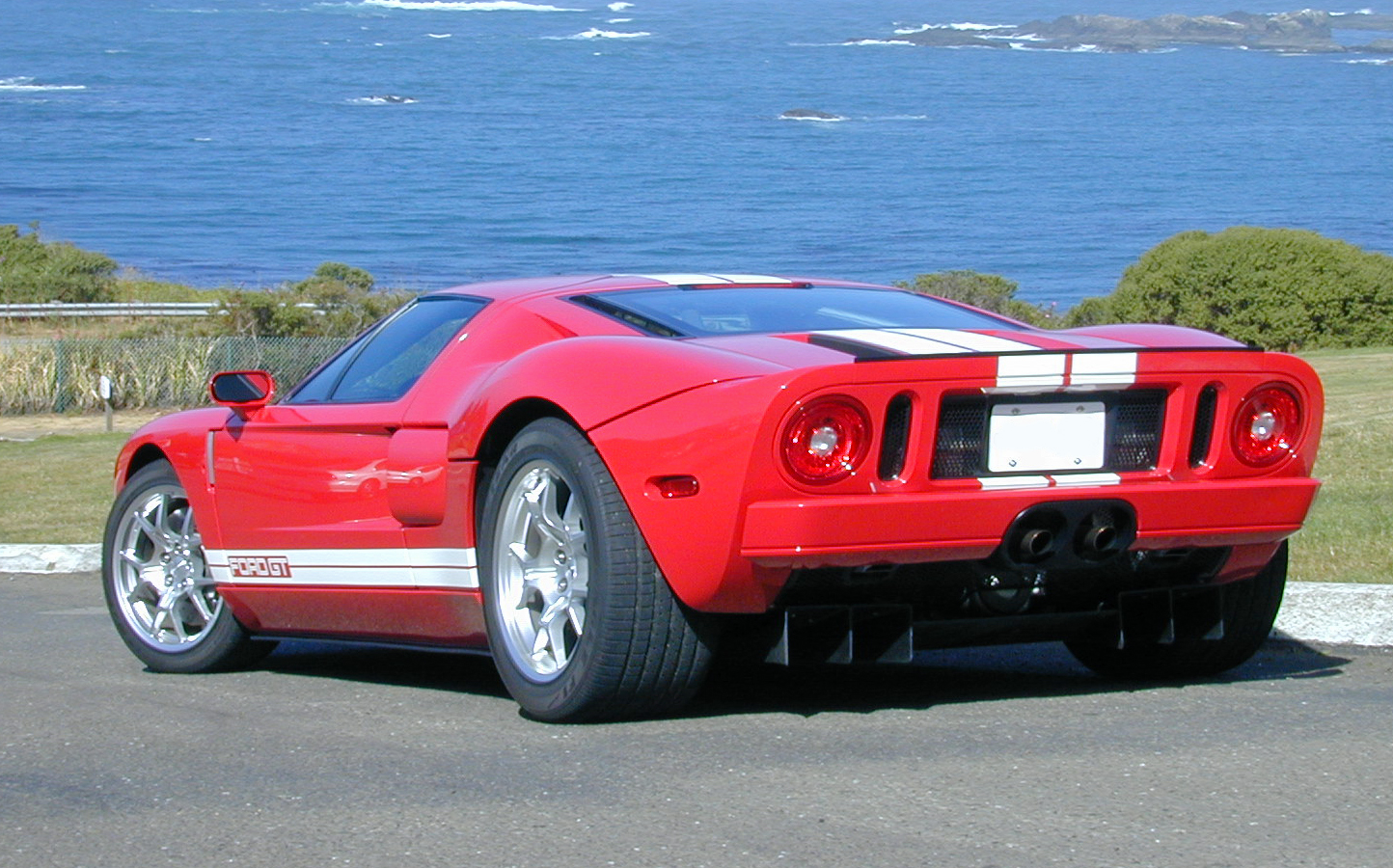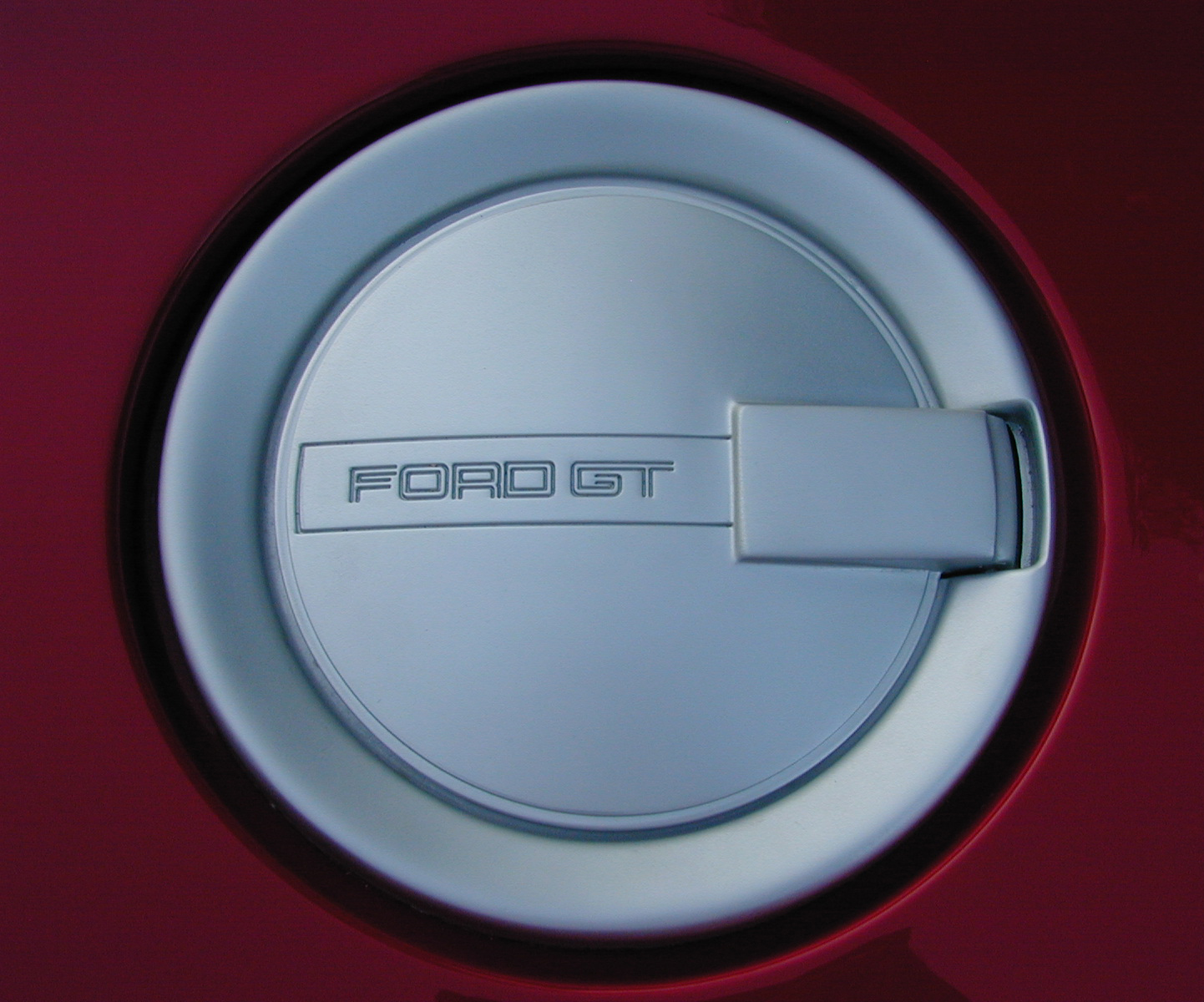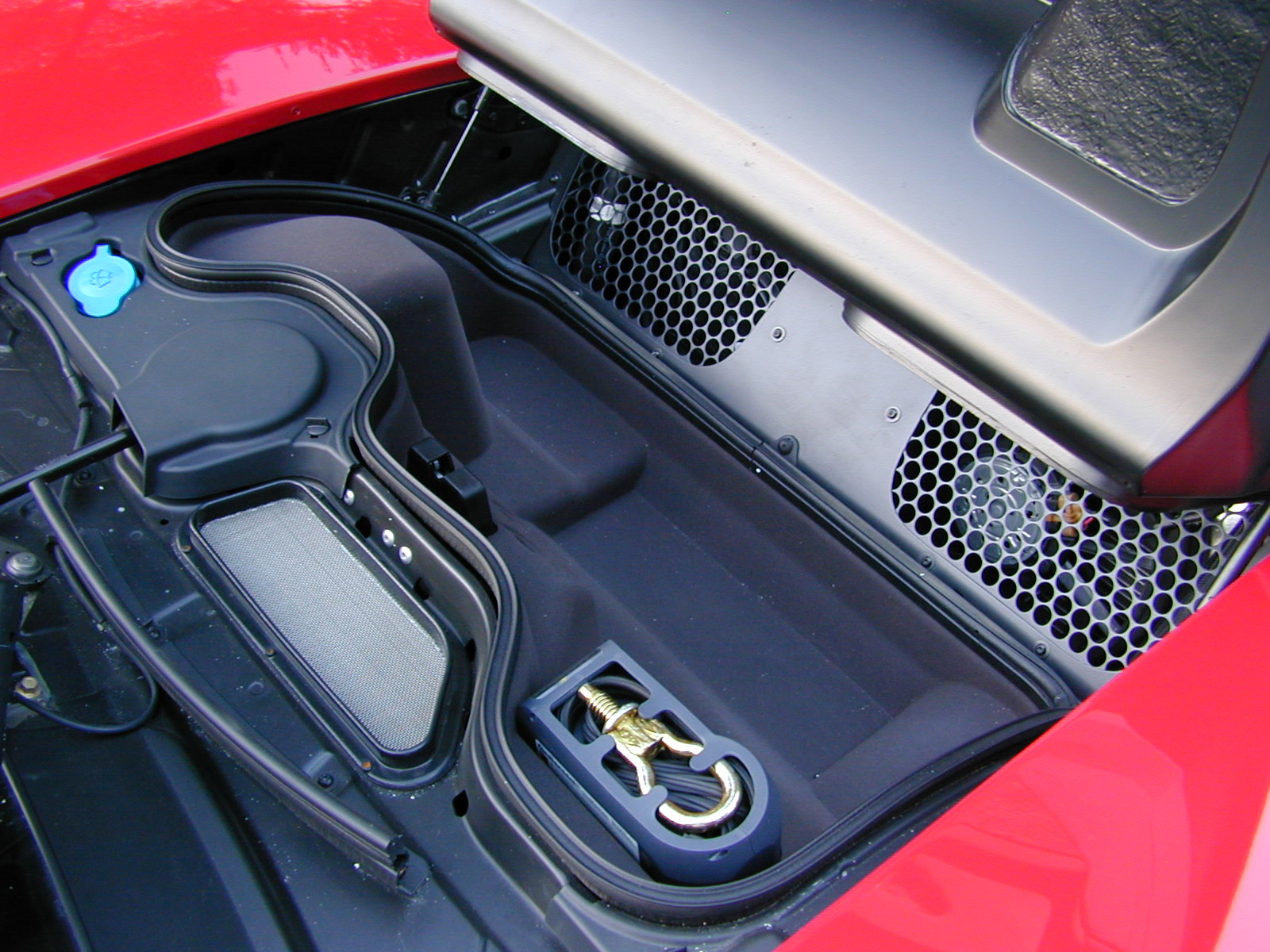After briefly driving the Ford GT for the first time on Gingerman Raceway in October of 2003 I was given a second opportunity in April of 2004. This time I had the car for over 48 hours on the roads in and around Napa Valley. During this drive I also learned I was getting an allocation to buy a 2005 Ford GT, equipped the way I wanted and sold at MSRP. This is the road test I wrote and these are the photos that came from driving that pre-production test car. This article first published July 2, 2004:
2005 Ford GT: Instant Classic
Every summer a few dozen world-class performance cars from bygone eras come together in the California Classic Rally, or California Mille. The rally starts on Rodeo Drive in Beverly Hills and snakes its way north over some of the most picturesque pavement ever laid down (in a state full of picturesque pavement).
Normally, this parade of pearlescent paint and patina-ed leather features the likes of Ferrari 250s, Mercedes-Benz 300s (both soft-top SLs and Gullwings), spoked-wheel Alfa Romeos and even the odd Delahaye. But this year a domestic automobile from the 21st century joined in the California Classic Rallye, yet the traditional rally members didn’t seem to mind — probably because the vehicle in question already possesses as much heritage and iconic imagery as a Ferrari GTO or Porsche 917.
The vehicle, of course, is Ford’s all-new 2005 GT, a model that pays homage to the original GT40 that took on — and beat — the world’s top racing cars in the mid- to late 1960s. While the new GT and the original GT40 don’t share a single mechanical component or exterior body piece, Ford returned to the philosophy of a powerful midengine V8 bolted to a stiff, lightweight frame enclosed in sleek bodywork when creating the 2005 version.
If you’ve been following the gestation of the Ford GT, you already know it first debuted at the 2002 Detroit Auto Show as the GT40 concept car. Within weeks of its debut, Ford announced it would be building the GT as a limited-production car. Three 2004 models were built in time for Ford’s Centennial Celebration in June 2003, and I got a close-up look at the accelerated design and production process a few months later. Finally, I got my first seat time in the GT at Gingerman Raceway in Michigan last fall, where I learned that all the hype about this vehicle wasn’t just hype. The Ford GT, at least under racetrack conditions, was as capable as any vehicle I’d ever driven.
Since that time, Car & Driver has put the GT up against the Ferrari 360 Challenge Stradale and Porsche 911 GT3. The car fairly smoked those models, both in straightline acceleration and around the 11-turn, 1.88-mile road course at the Gingerman track. It was clocked at 3.3 seconds in 0-to-60-mph acceleration and 11.6 seconds in the quarter-mile. More recently, the final horsepower and torque numbers for the car have been released: 550 hp at 6,500 rpm and 500 pound-feet of torque at 3,750 rpm. And just weeks ago, the car was tested at the Nardo high-speed test track in Italy, where it achieved a top-speed rating of 205 mph. Ford insiders tell us the car was actually hitting between 208 and 212 mph on multiple runs, but the company feels a conservative 205-mph certification is sufficient.
Just for reference, let’s review the latest numbers on the current crop of “top” supercars: the Ferrari Enzo, Mercedes-Benz SLR McLaren and the Porsche Carrera GT. The Carrera GT is said to be a 3.6-second 0-to-60 car with a top speed of 205 mph. The SLR’s numbers are estimated at 3.7 seconds for 0-to-60 and a top speed of 207 mph. The Enzo is supposed to get to 60 mph in 3.3 seconds and top out at 218 mph. Of course I could play the numbers game all day, but suffice it to say the $150,000 Ford GT is competitive with cars costing three to four times as much. Obviously that $150,000 price doesn’t include dealer gouging, but the same situation exists with the Ferrari, Mercedes-Benz and Porsche so the MSRP for each model is the only constant I have to go on at this point.
Yet far more exciting than the Ford GT’s performance potential is the demeanor displayed by this vehicle when not power sliding around a race course or attempting speeds above 200 mph. The route and pacing of the California Classic Rallye is not conducive to redline shifts or high-G turns, so I was content to simply turn up the optional McIntosh audio system and enjoy the scenery (both automotive and natural) as I wove my way north of Sonoma. Thankfully, the GT was happy to oblige. The Ricardo six-speed transmission is topped by a shifter that snicked easily between gears and a clutch pedal that felt only marginally stiffer than what I’ve experienced in late-model Mustangs. The McIntosh audio system even sounded better than I expected from such a purpose-built performance machine, though the eight-inch subwoofer that’s mounted between the seats intruded on personal space while blocking my view of the supercharger located on the other side of the rear glass, just behind the seats.
Other than getting in or out of the GT, which can be a real challenge depending on how much space you have to open the doors, the car is easy to live with for an extended time period. The steering column tilts and telescopes, and the carbon-fiber seats have an adjustable seat back angle while offering plenty of legroom (and a dead pedal), even for drivers over six feet tall. A padded section on the back of the magnesium center console serves as an armrest, and illuminated climate controls (also on the center console) have a finely machined feel with illuminated dials for nighttime use. Headroom can be tight, especially if you’re over 6 feet 2 and long in the torso, and seat bolstering, particularly in the lower back area, could be more aggressive to offer better lateral support.
Probably the biggest issue drivers will face, beyond the tricky entry/exit process, is the poor rear visibility that makes parking lot maneuvers an exercise in faith and/or frustration. Parking sensors and rear cameras have almost become de rigueur on minivans, trucks and SUVs. I’ll be happy when they make the leap to sports cars.
So it’s not easy to get in and out of, the seating could be a little better and rear visibility is subpar. Did we mention this is one of the most capable supercars ever produced? When I tried to actually hold these characteristics against the GT, I felt like the people who buy Hummers and then complain about poor gas mileage (read: losers). It was much easier to focus on the things the GT does better than any benchmark performance car should. Things like ride quality, road noise at highway speeds and the aforementioned audio system quality. The steering manages to provide substantial feedback without feeling overly heavy at low speeds or jittery at highway speeds. It’s not quite Ferrari/Porsche caliber, but it’s better than the Corvette or Viper.
Interior materials are a mixed bag, with compelling elements like the metal door panel trim and extruded aluminum door pulls offset by standard-issue Ford window switches and interior door releases. The metal shift knob feels great when working the gears — it’s offset toward the driver, sitting exactly where it should be. The toggle switches just below the gauge cluster look cool, but their feel and operation don’t live up to the precision, machined look they convey.
I’d be lying if I told you the Ford GT never got a workout during my time on the California Classic route. At one point I broke away from the pack and found a deserted ribbon of asphalt east of St. Helena, Calif. For the next 40 minutes, I utilized the GT as its designers intended and came away feeling more confident than ever that Ford has created an exotic-car slayer. Between the wall of torque provided by the aluminum 5.4-liter V8 and the immense stability offered via the aluminum space frame and double-wishbone suspension, it was difficult to imagine traveling down that stretch of road any faster, and with any greater confidence, in any other car.
Previously I had described the Ford GT as a “Viper-powered NSX” even though it is far more refined than a Viper and the midengine chassis feels even stiffer than that of an NSX. Now I can add a third element to the description — “a Viper-powered NSX with C5 Corvette drivability on a daily basis.”
You may not think it’s “the one” as Ford has dubbed it, but the GT is the closest thing to it I’ve ever experienced.














